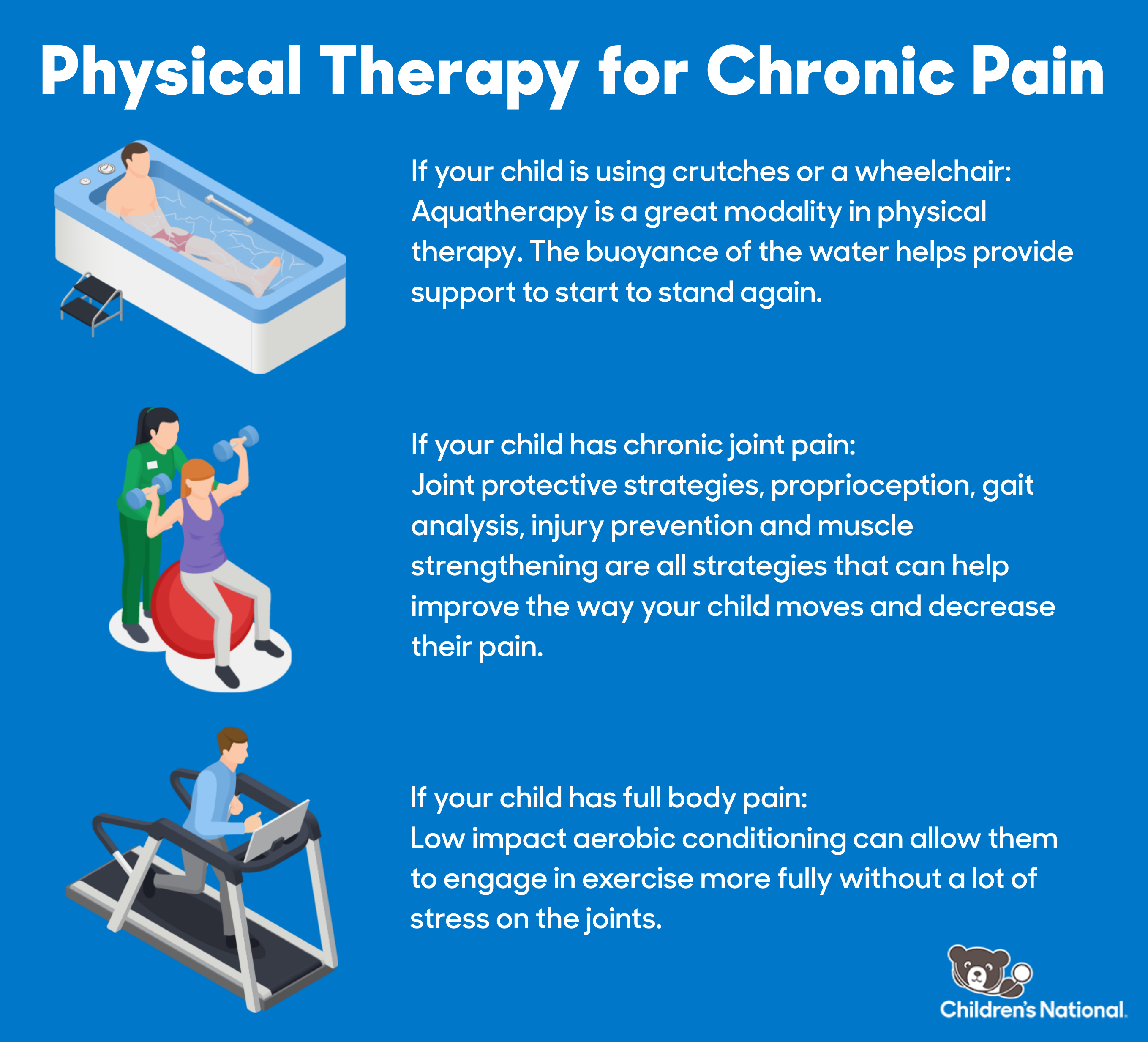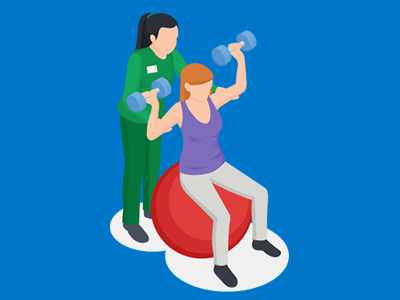No one likes being in pain! Especially not children. But what if not moving made pain even worse?
Having pain for a long time can cause:
- difficulty sleeping,
- poor mood (especially for our young athletes who use exercise as an outlet for stress!),
- overall deconditioning.
Data has demonstrated that for children in chronic pain, heart pumping activity of at least 30 minutes duration can improve mood and sleep and lower chronic pain!
Physical therapy can help your child start moving again in a way that is safe and guided by evidence.
The below suggestions can help if your child has chronic pain. Chronic pain is different from acute pain. Acute pain is related to tissue damage — like a broken bone. Your child should rest so the body can heal. Chronic pain is a complex phenomenon; there is no tissue damage but instead abnormal signaling in the body that results in increased pain.
- If your child is using crutches or a wheelchair to move around, aquatherapy would be a great modality in physical therapy! The buoyance of the water helps provide support to start to stand again.
- If your child has chronic joint pain, joint protective strategies, proprioception (knowing where joints are in space and time), gait analysis, injury prevention and muscle strengthening are all strategies that can help improve the way your child moves and decrease pain.
- If your child has full body pain, low impact aerobic conditioning can allow your child to engage in exercise more fully without a lot of stress on the joints.
Physical therapists set functional goals with the child and provide home exercises tailored to your child’s current level of conditioning to do every day.
These are just a few ways physical therapy can help decrease chronic pain and improve quality of life. It is one of the important types of therapy used in the chronic pain clinic. If your child has chronic pain, physical therapy can help get your child moving again which can help improve sleep and mood.

 https://riseandshine.childrensnational.org/wp-content/uploads/2017/09/kids-running-with-backpacks.jpg
300
400
Rise and Shine
https://riseandshine.childrensnational.org/wp-content/uploads/2017/11/childrens_riseandshine_logo.jpg
Rise and Shine2023-08-25 14:00:492025-09-15 12:28:04Avoiding backpack back pain
https://riseandshine.childrensnational.org/wp-content/uploads/2017/09/kids-running-with-backpacks.jpg
300
400
Rise and Shine
https://riseandshine.childrensnational.org/wp-content/uploads/2017/11/childrens_riseandshine_logo.jpg
Rise and Shine2023-08-25 14:00:492025-09-15 12:28:04Avoiding backpack back pain



 Elisha Peterson, MD, FAAP, is a board certified pediatric anesthesiologist and pain medicine physician.
Elisha Peterson, MD, FAAP, is a board certified pediatric anesthesiologist and pain medicine physician.












This blog brilliantly highlights how physical therapy can be a game-changer in managing chronic pain. The insights shared on its benefits and effectiveness make it a must-read for anyone seeking non-invasive pain relief options.